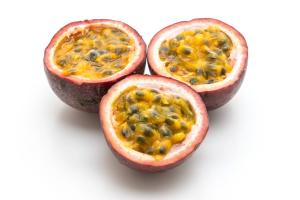Does Mustard Plant Grow into a Tree or Bush?
Mustard plants belong to the Brassicaceae family, which also includes other vegetables such as broccoli, cauliflower, and cabbage. These plants are known for their unique taste, pungent smell, and health benefits. Although mustard plants can vary in size and shape, they typically do not grow into trees or bushes.
What Does a Mustard Plant Look Like?
Mustard plants come in different varieties, but they generally have a similar appearance. They have green leaves that are either lobed or unlobed, depending on the type. The leaves grow in a rosette pattern, which means they branch out from a central point near the base of the plant. Mustard plants also produce yellow flowers that are clustered at the top of long stems. After the flowers are pollinated, they turn into small pods that contain tiny seeds. The seeds can be black, brown, or yellow, depending on the variety of mustard plant.
How Does a Mustard Plant Grow?
Mustard plants are annuals, which means they complete their life cycle in one growing season. They grow best in cool weather and can germinate in soil with temperatures as low as 40°F (4°C). Once the seeds are planted, they will germinate within one to two weeks. Under optimal growing conditions, mustard plants can reach a height of two to four feet (60 to 120 cm) and a width of one to two feet (30 to 60 cm).
Can Mustard Plants Grow in Different Climates?
Mustard plants are versatile and adaptable, which means they can grow in a variety of climates. They thrive in cooler temperatures and can be grown in USDA hardiness zones 4 to 9. However, they can also be grown in warmer regions as long as they are not exposed to extreme temperatures. Mustard plants prefer well-drained soil that is moist but not waterlogged. They also require full sun exposure to produce the best yields.
What Are the Uses of Mustard Plants?
Mustard plants have a variety of uses that go beyond adding flavor to dishes. The seeds can be ground and made into a paste that is used as a condiment for sandwiches and hot dogs. Mustard seeds are also used to make mustard oil, which is used in cooking, massage, and skin care products. The leaves of mustard plants can be eaten raw or cooked and are a popular ingredient in salads and stir-fry dishes. Finally, because mustard plants grow quickly and easily, they are often used as cover crops to add organic matter to soil and prevent erosion.
In Conclusion
Although mustard plants are not known for growing into trees or bushes, they are highly valued for their unique taste, multiple uses, and adaptability. Whether you are a gardener, a cook, or a health enthusiast, you can benefit from adding mustard plants to your repertoire of plants and ingredients.

 how many times do yo...
how many times do yo... how many planted tre...
how many planted tre... how many pine trees ...
how many pine trees ... how many pecan trees...
how many pecan trees... how many plants comp...
how many plants comp... how many plants can ...
how many plants can ... how many plants and ...
how many plants and ... how many pepper plan...
how many pepper plan...
































